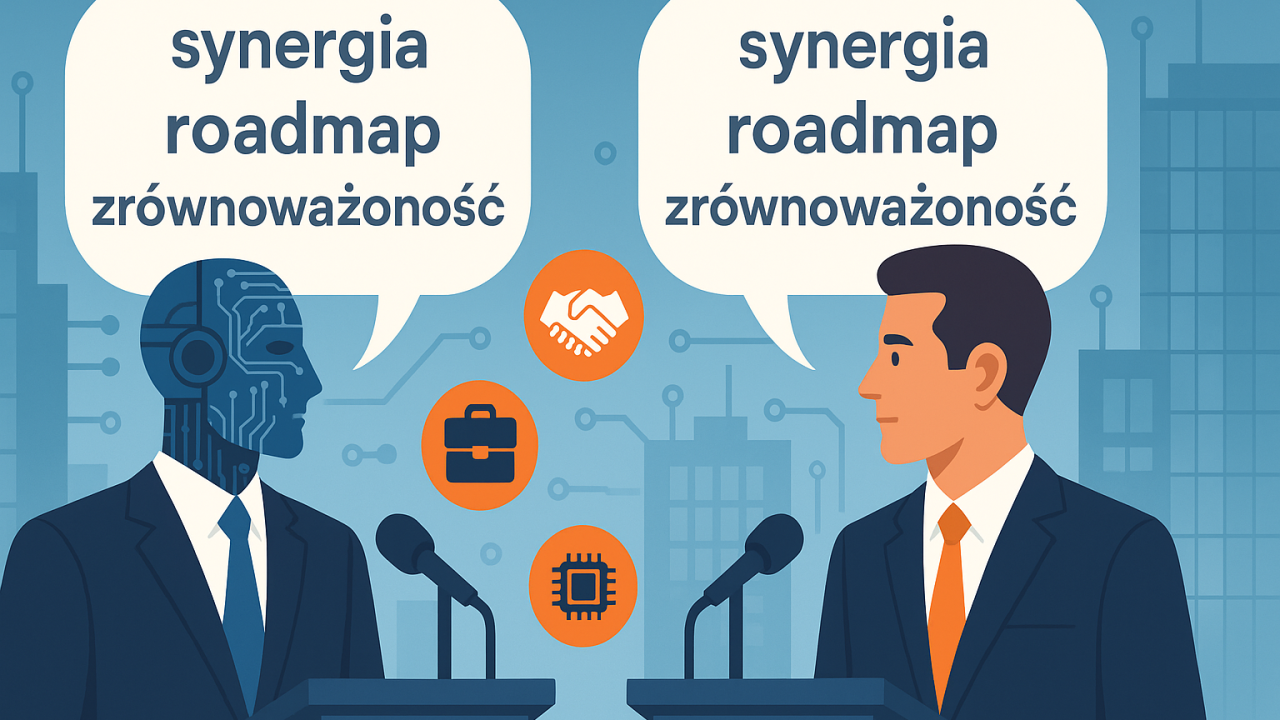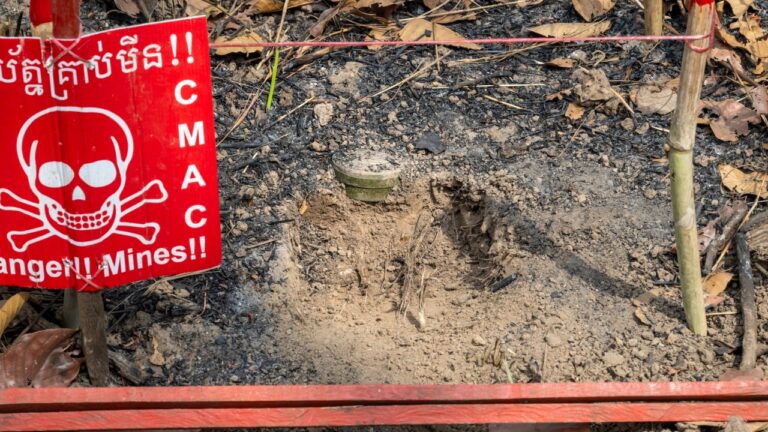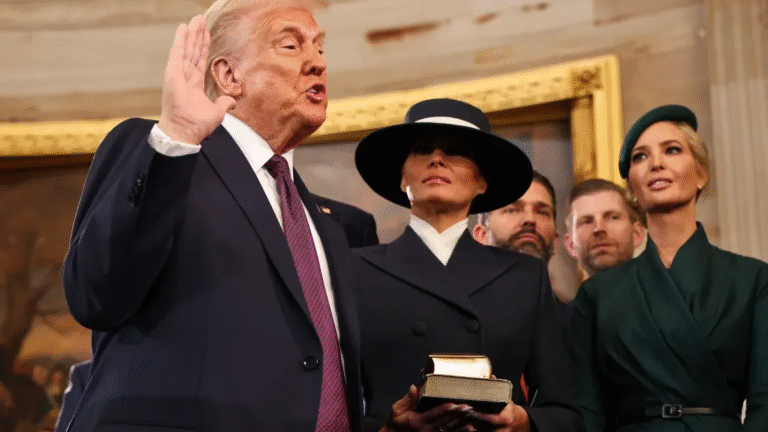AI Language in PR Reflects Human Corporate Speak
Until now, the debate about AI in PR has focused on what artificial intelligence can do and how it speeds up processes. Whether it will take our jobs and which positions will be the first to buckle under technological pressure, especially since, according to Forbes, already every fourth press release is generated or supported by LLM. Meanwhile, the key question is: why does AI soundexactly like corporate speak? It’s not about whether a given text was written by a machine – but why does text generated by artificial intelligence sound like it was created by an experienced PR professional?
Perhaps this is because texts created by humans are accepted and corrected by at least four employees from three different corporate departments, and the effect accepted by everyone is a form of compromise: a safe average stripped of any human character. Analyses of transformations and research on organizational language prove that the dehumanization phenomenon in PR is not an effect of generative models’ actions, but their training foundation.
Format History: How the Pattern Emerged
The press release format emerged as a tool of order and efficiency, not expression. The first official press release was created in 1906 by Ivy Lee for Pennsylvania Railroad, to preempt the media after a train disaster. From that moment, a pattern was established, based on which companies in the 1980s began standardizing their messaging. The layout: headline, lead, quote, call to action were a response to rising mass advertising costs and media environment complexity, and less an expression of the sender’s voice. Without pointing fingers – media liked this simplification because they could work easier, faster, and more efficiently.
In Poland, this process began in earnest in the 1990s and early 21st century, when corporate communication was massively translated from English. Polish equivalents were lacking for expressions such as “filling the gap,” “cutting-edge technology,” or “sustainability.” Even today, the word “zrównoważoność” (sustainability) causes grimaces. This created not only linguistic calques, but an entire writing style – formal, conservative, and polished in accordance with the expectations of sworn translators. Back then, it was a breath of the West, modernity and enlightenment, just like shampoo advertisements and the first mobile phones.
Corporate Speak: Language of Resistance to Error
With digitization and the growth of compliance structures (internal systems ensuring company actions comply with law, industry regulations, and internal standards), companies began using safe language: impersonal, neutral, overloaded with euphemisms and project terminology. Nobody wanted to risk potential disputes, lawsuits, or anger from regional managers. The phenomenon was called corporate speak – not just a style, but a systemic sociolect.
A sociolect is a language variety characteristic of a specific social group – here: the corporateenvironment – which uses its own vocabulary, abbreviations, and phrases serving both communicationand emphasizing group belonging.
Example: If someone says, “develop a roadmap, integrate touchpoints, and launch a discovery sprint,” even if they don’t specify the environment they work in – we already know. That’s precisely a sociolect. Some malicious observers would say that corporate speak has replaced Russicisms and the newspeak of comrades.
Expressions like “delivering value to stakeholders,” “optimized communication processes,” “innovative 360-degree approach” are meant not to inform, but to justify actions and blur decision complexity. They serve as a linguistic shield – filtering emotions and weakening the message’s agency. For the same reason, “problems” ended and “challenges” began. We believed that hands arranged in a pyramid, a blue shirt, and benefit language would help us conjure reality and assist in achieving annual goals.
Another manifestation of this corporate speak is the practice of using capital letters in spelling wordslike “Client,” “Brand,” or “Marketing Director” in press releases, which is an error in Polish. It’s a stylistic device meant to emphasize prestige, but simultaneously derealizes language and highlights hierarchy– a typical element of agency standard, being a calque from organizational language and global corporations.
Is it a coincidence that, according to linguists and journalists, one of the signals increasing the probability that a text was prepared by artificial intelligence isal letters at the beginning of words overusing capitand artificially organized paragraphs with identical structure? No. It’s a format trace. device meant toige, but simultaneously derealizes language and highlights hierarchy– a typical element of agency standard, being a calque from organizational language and global emphasize prest
Three PR Generations: From Word to Prompt
According to an Exacto report, three generations currently function in Polish PR (listed here in a way that also suggests suspected AI collaboration, because in bullet points):
- Transformation generation (born 1960–1979, otherwise “X”): industry creators, often withhumanities education, founded the first agencies and learned PR from Western textbooks.
- Digital generation (born 1980–1995, otherwise “Y”): combine classic communication with digitalchannels, are flexible but respect structures.
- Generation Z (born 1996–2010): consider AI tools natural, don’t see them as a threat. They use themnot to deceive, but to accelerate – generate standard content that would be similar anyway.
In public relations, we’ve reached a situation where everyone uses the same institutional code: predictable style, established schemas and text structures that reproduce an once-accepted way of speaking – safe, impersonal, meeting environmental expectations, but rarely bold or human. Only the tool differs. Older generations rely on their habits. Generation Z more often uses AI, but not to write better — just faster. Language patterns and schemas remain the same.
AI as a Corporate Language Machine
According to DiMaggio and Powell’s theory (1983), organizations become similar to each other not only structurally, but linguistically. AI only accelerates this process. Moreover, language models didn’t create artificial style — they were trained on it. PR texts generated by AI sound like those written by humans because they utilize the same ready-made linguistic schemas, such as verbal nouns (e.g., “realization” instead of “to realize”) and impersonal formulations. We learned to create complex nominal structures that turn actions or responsibilities into process names (e.g., “optimization of information flows” instead of “we improve communication”) and specialist phrases describing processes, not people or decisions. AI doesn’t introduce new language – it reproduces what has been deemed “professional” by humans and corporations.
AI vs. Newspeak
Let’s also note the newspeak described by George Orwell in “1984.” Both language forms tend to hide the perpetratormplexity, which can lead to alienation. However, unlike newspeak, corporate speak emerged from the bottom up — as a product of the business environment, not political and artificial phrases, and language standardization. However, their purposes differ. Newspeak was a tool of totalitarian control — meant to limit thinking possibilities. Corporate speak, on the other hand, is a result of optimization and unification processes, simplifying communication coplanning.
Newspeak and corporate speak are connected by mechanisms: vocabulary limitation, impersonality, artificial phrases, and language standardization. However, their purpose differs. Newspeak was a tool of totalitarian control — meant to limit thinking possibilities. Corporate speak is rather a result of optimization and unification processes — it simplifies communication. I hope so.
Version 1: Corporate Speak Conclusion
Given the growing importance of artificial intelligence-based tools, implementing integrated communication strategies becomes crucial, supporting effective resource allocation and ensuring message consistency at all organizational levels. AI, while maintaining a holistic approach to communication processes, enables maximization of media action synergies, simultaneously optimizing reaction time and content quality.
To effectively respond to modern communication challenges, cultivating a culture of conscious leadership and transparent information practices is necessary, based on co-creation values and multi-channel stakeholder interaction. Organizational language transformation in the AI era doesn’t meanabandoning professionalism, but requires its redefinition based on flexible message models anddynamic mapping of environmental information needs.
But It Can Be Simpler! Version 2: Human Conclusion
AI didn’t create empty corporate speak. We spent years learning to write so nobody would object. Instead of conveying emotions and thoughts, we learned to put them in safe frames. AI simply repeats this.
It’s worth recalling an apt comment from the r/Futurology forum:
“AI tools already optimize prices, forecast demand, analyze competition, and write press releases. If most managerial decisions are really advanced pattern recognition and data-driven decisions, then silicon neural networks might outperform our carbon nervous systems.”
If we want authentic communications, we must stop treating language as a tool for hiding content. Communication isn’t format – it’s relationship. AI can help write, but only humans can give meaning.



